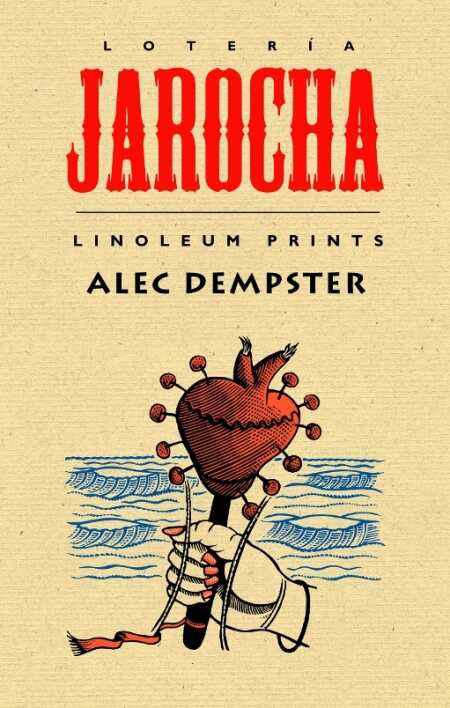Lotería Jarocha
Linoleum Prints
- 2013 INDIES Finalist
- Finalist, Regional (Adult Nonfiction)
Dempster’s linocut illustrations based on Mexican folk music are imaginative and fun, with writing that only adds to the enjoyment.
During his time in Veracruz, Mexico, musician and artist Alec Dempster began to create illustrations of various son jarocho, musical pieces in a folk style popular in the region. Dempster’s book Lotería Jarocha: Linoleum Prints combines sixty of his linocut illustrations—each based on a specific son—with artist’s notes about each. The result is an impressive collection art fans will appreciate.
Dempster has recorded multiple albums of son jarocho himself, and his linocuts have been used on multiple game boards for lotería—a bingo-like game that uses illustrations rather than numbers. He clearly loves the material, and that resonates in his artwork. His pieces have a whimsical quality that works for decorating lotería game boards, while also celebrating the music that inspired him.
Each of the drawings appears on a right-hand page, and Dempster supplements his artwork with just the right amount of text on the left-hand side. Depending on the print, he writes about the lyrics of the son that inspired it, the history of a particular piece of music or dance, or the personal experiences in Veracruz he evokes in his art. The book is beautifully produced, printed on a textured paper stock that helps the black-and-white images pop on the page, and gives the project a timeless appearance and tactile feel.
His anecdotes are brief and interesting, enhancing the reader’s understanding of each piece without becoming indulgent or repetitive. For a piece called “La Iguana,” Dempster created a dancing man holding the titular lizard by the tale, and text describes the experience of watching the dance that accompanies this piece of music. “El Conejo” depicts an enormous rabbit leaping over a city, and is accompanied by the story of how rabbits became associated with the town of Santiago Tuxtla in Veracruz. In the case of “El Huerfanito,” Dempster includes the lyrics of a son usually played at funerals, to accompany his plaintive portrait of a child kneeling in mournful prayer.
Dempster’s linocuts convey equally the sorrow of “El Huerfanito,” the joy of the dance-based prints, the gentle absurdity of an absent-minded mole with a cane (“La Tuza”), and a pig using its snout to cook (“La Tarasca”). Dempster’s artwork is imaginative and fun to experience, and his writing only adds to the enjoyment.
Reviewed by
Jeff Fleischer
Disclosure: This article is not an endorsement, but a review. The publisher of this book provided free copies of the book and paid a small fee to have their book reviewed by a professional reviewer. Foreword Reviews and Clarion Reviews make no guarantee that the publisher will receive a positive review. Foreword Magazine, Inc. is disclosing this in accordance with the Federal Trade Commission’s 16 CFR, Part 255.

